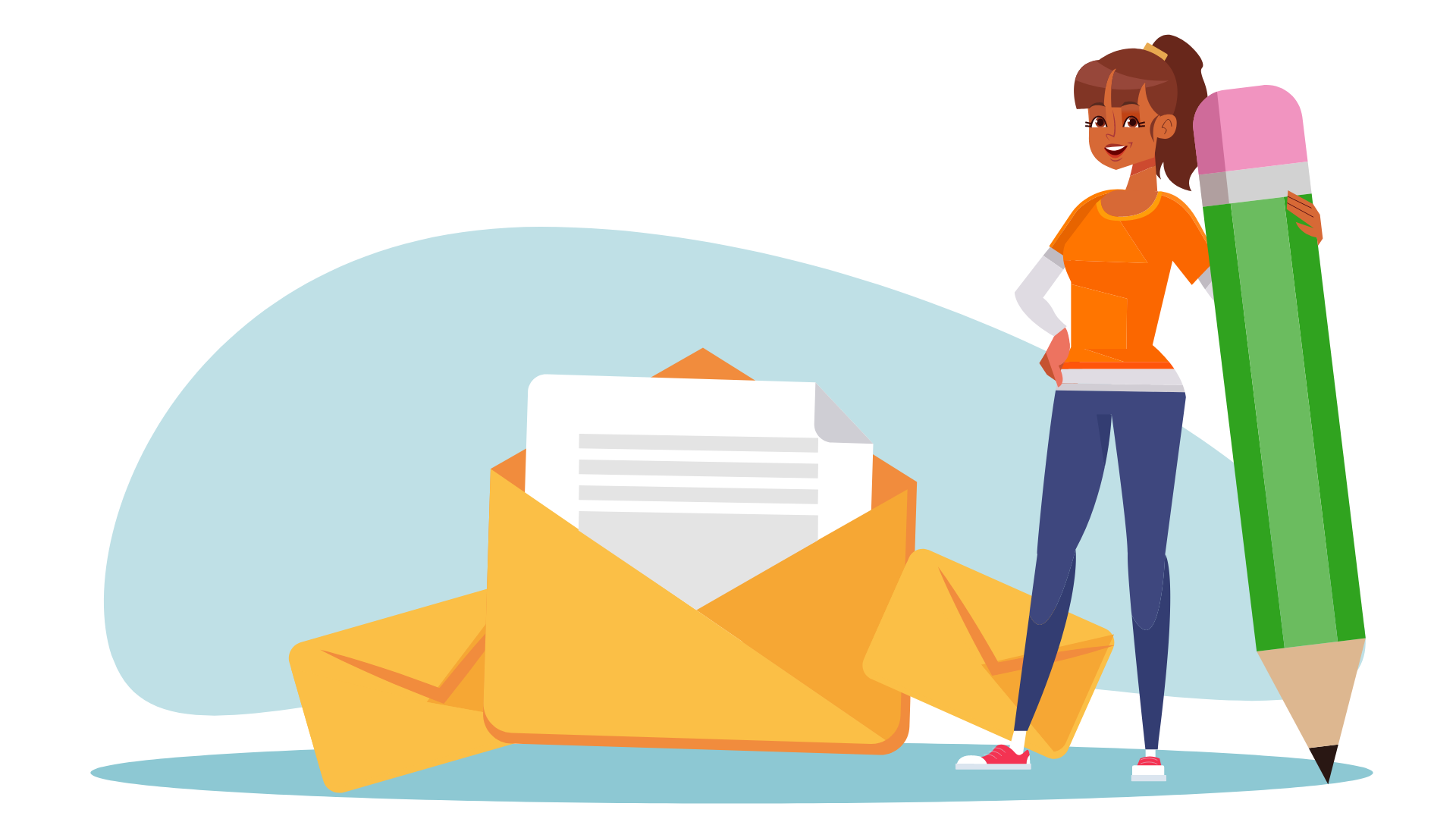In the big world of online marketing, email is a big deal. But sometimes, no matter how hard you try, your emails just don’t get the love you hoped for. Why? Let’s break it down.
Doing the Same Thing Doesn’t Always Work
If you keep doing the same old thing and expect different results, you might be disappointed. Think about it: if your emails aren’t hitting the mark, it’s time to try something new.
Meet Sarah. She runs a small online boutique and sends out the same old weekly newsletters with generic discounts. But her open rates barely budge, and her sales stay stagnant. It’s time for Sarah to try something new and see what really grabs her customers’ attention.
Instead of sending generic discounts to her entire email list, Sarah can improve her email marketing by:
- Splitting her email list based on customer preferences.
- Using past purchase data to suggest personalized products.
- Adding fun quizzes or product demos to engage customers.
- Trying out different subject lines and content formats.
- Testing what works best with A/B testing.
She can make her emails more memorable and impactful by sharing stories about the inspiration behind her products, the people behind the brand, or customer success stories. Sarah can breathe new life into her email marketing efforts and increase engagement and sales for her online boutique.
People Want Something Special
When someone signs up for your emails, they’re looking for something valuable. It could be cool deals, helpful tips, or just a friendly chat. If you’re not giving them what they want, they’ll tune out.
Think about Mike, the fitness coach. His subscribers signed up for his emails to get personalized workout tips, not generic fitness advice. By tailoring his emails to his audience’s fitness goals, Mike keeps his subscribers engaged and coming back for more.
Let’s turn to an example:
Subject: Alex, your fitness plan is ready
Hey there,
Hope you’re doing well! 😊
As we discussed previously, I’ve tailored your plan to help you reach your fitness goals, whether it’s building strength, shedding some pounds, or boosting your energy.
Inside this email, you’ll find workout routines, nutrition tips, and motivational advice—all personalized just for you. It’s time to kickstart your fitness journey and make progress towards a healthier, happier you.
If you have any questions or need further guidance, just hit reply. I’m here to support you every step of the way!
Take care, Mike
——————–
You can easily Unsubscribe if you change your mind.
Make It Personal
Nobody likes getting boring, one-size-fits-all emails. Take a cue from your subscribers and give them something tailored to their interests. It makes them feel special and keeps them coming back for more.
Emily loves shopping online but gets bombarded with boring sales emails from various clothing brands. However, when her favorite brand sends her personalized recommendations based on her past purchases and style preferences, she’s much more likely to click through and make a purchase.

Plan Ahead and Be Smart
Don’t just wing it—plan your emails in advance and use tools to help you out. This way, you can see what works and what doesn’t, and tweak your strategy accordingly.
Take the case of Alex, a marketing manager at a tech startup. By planning out their email campaigns months in advance and leveraging a Marketing Automation CRM, Alex ensures that each email aligns with the company’s broader marketing strategy. This approach not only saves time but also allows for thorough analysis and optimization based on real-time data.
Alex can analyze what’s effective and what isn’t, enabling them to adjust their strategy for improved outcomes.
Quality Beats Quantity
Sending too many emails can annoy people. Instead, focus on sending fewer emails that really pack a punch. Make sure each one has a clear purpose and gives your subscribers something they actually want.
Consider Tom, who subscribes to a popular tech blog for industry insights. Initially intrigued by the content, Tom soon finds himself overwhelmed by the flood of daily emails cluttering his inbox. Faced with too much information and too little value, he unsubscribes, seeking a more curated and focused experience elsewhere.
Meet Emily, the owner of a small online bookstore:
Emily wanted to increase engagement with her subscribers without overwhelming them with too many emails. She devised a strategy of sending two to three emails per week, each with a specific purpose.
- Monday Motivation: Every Monday, Emily sends out a motivational email to kickstart her subscribers’ week. This email includes inspiring quotes, book recommendations to boost productivity, and tips for personal growth. The goal is to provide her subscribers with the motivation they need to tackle their goals for the week ahead.
- Wednesday Wishlist: On Wednesdays, Emily sends out her “Wednesday Wishlist” email. This email features a curated list of books that are trending or highly recommended by her customers. Emily includes brief descriptions and reviews of each book, making it easy for her subscribers to discover new reads that align with their interests.
- Friday Freebie: To end the week on a high note, Emily sends out a “Friday Freebie” email. This email offers her subscribers exclusive access to free ebooks, author interviews, or behind-the-scenes content. By providing valuable freebies, Emily fosters goodwill with her subscribers and encourages them to continue engaging with her bookstore.
By sticking to this schedule and ensuring that each email serves a clear purpose, Emily successfully avoids overwhelming her subscribers with too many emails. Instead, she provides them with valuable content that keeps them eagerly anticipating her next message.
Keep It Simple
Don’t overload your emails with too much information. Stick to one topic per email and make it easy for people to understand. And don’t forget a catchy subject line to grab their attention!
Lisa, the freelance graphic designer, knows that less is more when it comes to email content. By sticking to one topic per email and crafting catchy subject lines, Lisa captures her audience’s attention without overwhelming them.
Let’s look at an example:
Subject: Elevate Your Brand with Custom Logo Designs
Hi there,
Hope this message finds you well! 😊
Looking to give your brand a fresh new look? I’ve got you covered! I’m thrilled to announce that I’m now offering personalized logo design services tailored to your brand’s unique personality and vision.
Interested in learning more? Let’s chat! Simply hit reply to this email, and we can discuss how to make your brand shine.
Keep creating, Lisa
———————————
To opt out of receiving my emails
Be Human
Nobody likes talking to a robot. Make sure your emails come from a real person, not a generic address. This will make your subscribers feel like they’re not talking to just another company.
John loves getting personalized emails from his favorite local bakery owner, inviting him to exclusive events and offering special discounts. It makes him feel like he’s talking to a friend, not just another business.
This personalized approach not only enhances John’s satisfaction but also deepens his emotional connection to the bakery, ultimately leading to increased customer retention and advocacy.
Clean Up Your List
Not everyone on your email list is actually interested in what you have to say.
It’s essential to recognize that not all subscribers are alike. While some eagerly anticipate your emails, others may have only signed up on a whim or for a one-time offer. Furthermore, even those who initially engage may lose interest over time due to various reasons.
Whether it’s a shift in priorities, inundation with emails, or simply evolving preferences, understanding the diverse motivations and behaviors of your subscribers is key to crafting effective and targeted communication strategies.
Get rid of the dead weight and focus on engaging with the people who really care.
Amy, the marketing manager at an e-commerce store, regularly purges inactive subscribers from their email list. By focusing on engaging with the people who really care, Amy ensures that their email campaigns are reaching the right audience.
Time for a Change
Now that you know what’s been holding your emails back, it’s time to shake things up. Try out some new ideas, see what works, and keep refining your strategy until you find the winning formula.
Armed with these insights, it’s time to refine your email marketing strategy. Whether you’re a small business owner, a marketing manager, or a freelance professional, understanding your audience, delivering value, and embracing innovation are key to success.
By crafting personalized, strategic campaigns and leveraging the power of marketing automation, you can unlock the full potential of email marketing and drive meaningful results for your business.
If you want to learn more, the team at Popular Content has put together a great library.




